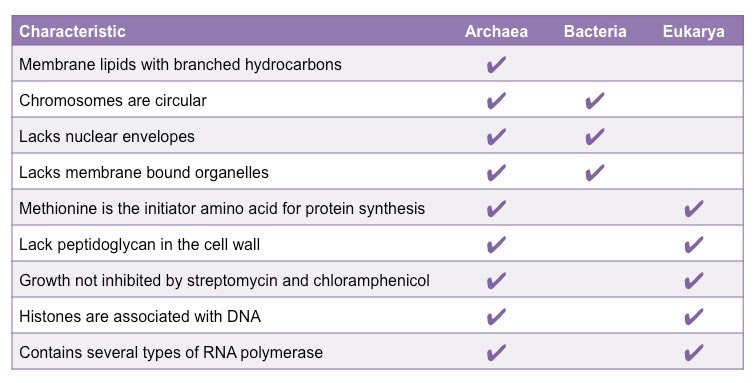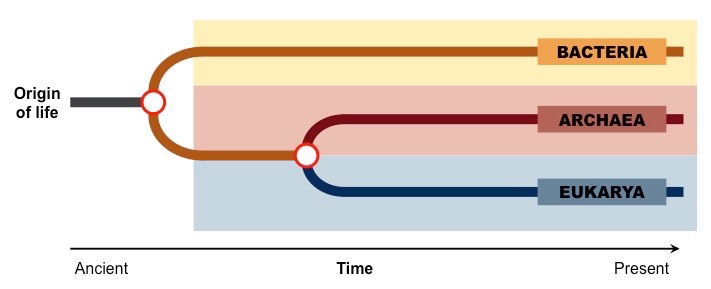Traditional classification schemes separated organisms into two main groups – prokaryotes and eukaryotes
- This classification scheme was widely entrenched until 1977 when Carl Woese proposed a new system
The large diversity of organisms classified as prokaryotes prompted Woese to separate these bacteria into two distinct domains
- Eubacteria includes most of the commonly encountered bacterial forms (i.e. pathogenic bacteria and probiotic bacteria)
- Archaea consists of the extremophiles (e.g. thermophiles, halophiles, methanogens, etc.)
The archaeal cells were found to possess certain features that were more in common with eukaryotic cells than eubacteria
- This included certain structural features (e.g. cell wall composition) and the presence of histone-like proteins in DNA
- Based on these discoveries it was concluded that eukaryotes and archaea share more recent common ancestry than eubacteria
Comparison of Archaea, Eubacteria and Eukarya

Evolutionary History of the Three Domains

